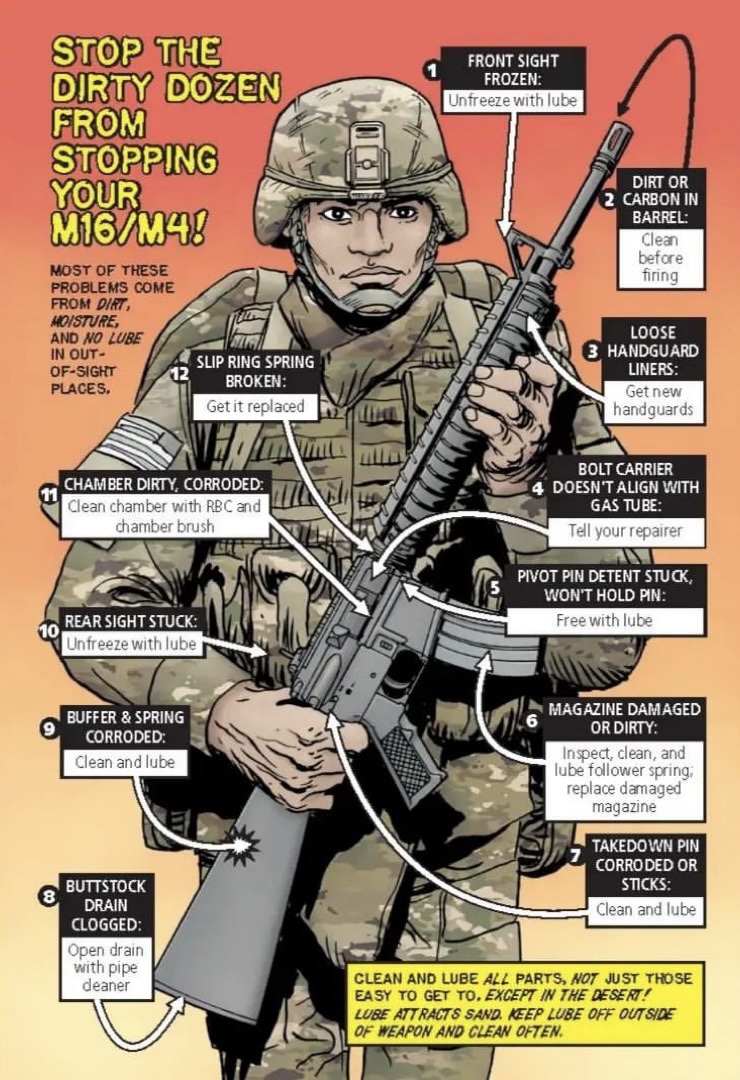
Via PS Magazine.

Via PS Magazine.
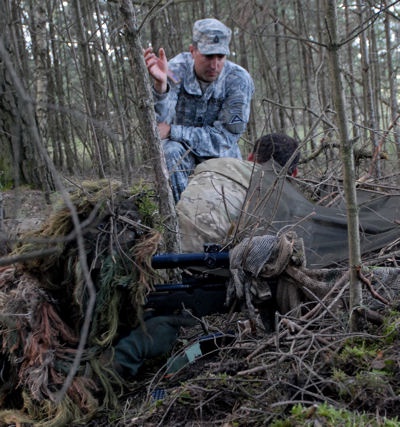
We published this in 2014. Since then, Daniel Winkler has grown his business and his blades have grown in popularity in no small part thanks to Retired SEAL and Best Selling Author Jack Carr featuring them in his hit book and Amazon series featuring the character James Reece. Since so many new people have heard of Daniel Winkler, I thought it would be a good idea to share his roots.
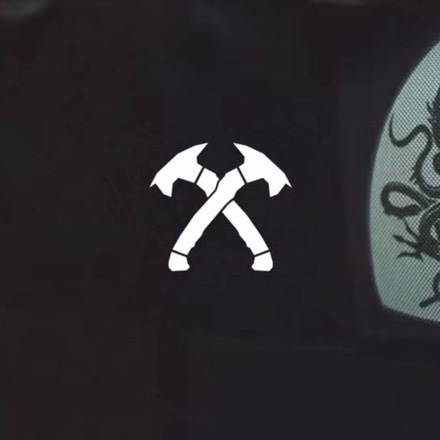
We are fortunate enough to be able to share this bio of Master Bladesmith Daniel Winkler. I’ve written about him multiple times and he does awesome work. But it’s his traditional designs that really interest me and how they’ve influenced the modern stuff he does for SOF. Believe me, you’ll get to see plenty of his more primitive/native/early American work in this post. Afterwards, I think you’ll have a better understanding of where he’s coming from. If you can’t tell, Daniel Winkler is a man I admire. Although he’s told me his story in person, it’s always fascinating to hear it again, and, some of it’s pretty darn funny, especially if you know Daniel and Karen. I hope you enjoy it as much as I do.
For those that are familiar with Winkler Knives and those that are not, I thought it might be important to tell a little about where Winkler Knives all got started.
My Name is Daniel Winkler. I was born in 1956 in Boone North Carolina. I have never lived anywhere else.
Next, the move to a “FullTime Knife Maker”.
The next stage actually started a couple of years before I went full time as a Knife maker. This was when Winkler Knives really started to take off and the driving force was Karen Shook. I went to work for Karen in the mid 1980’s in product development in the giftware industry. She had been with the company for several years and had knowledge and experience in Marketing and manufacturing processes. As our friendship developed she became interested in my hobby business of knife making. Since each knife I made needed a sheath and I hated making sheaths. I asked her if she would like to make sheaths for me in her spare time. I taught her everything I knew about making knife sheaths which took about 10 minutes. In those days I would put the knives on the table for people to see and only after money was handed over did they get to see the sheath. However when Karen took over making the sheaths we could put them right out with the knives without losing sales.One important encounter we had was when a well-known knife collector took an interest in one of my knives. He asked if there was a sheath to go with it so I reached under the table and handed it to him. It was one of my designs that Karen had reluctantly made. He looked over the sad piece of leather and said that this time he would buy the knife but unless the quality of the sheath matched the quality of the knife he would not be buying any more. This comment was one of the most important learning experiences in Winkler Knives history. We took this to heart and would go to museums in our travels and look at early American and American Indian displays of weapons, tools and clothing. Karen would study the construction and materials and implement a lot of what we saw in the new and improved sheaths.After a short while Karen’s sheaths became as, if not more, sought after than my knives.
I worked for Karen for a while and although I felt I was the best employee a company could have Karen had the opinion I was the worst.
As word of mouth passed through the Special Operations community we started getting quite a following with the SOF Teams. We started getting orders for DOD contracts, Unit purchases and sales to individuals. Besides the Military community we have set up several dealers as well as accepting orders from individuals. The products we have offered in the Winkler Knives II line are either the same as we developed for the Military or variations from these tested designs. Besides the knives and axes the sheaths and axe carriers had to go through extensive design changes to get them to work with the equipment kits the men were wearing. Access, secure carry and comfort are all top considerations and if one of these areas is wrong you might as well figure on the tool being left at camp instead of being carried on missions. No matter how great you think your knife or axe is if the front line guy’s don’t wear it you are just making expensive wall and shelf decor. We now have a lot of different products with a lot of handle and finish options.
For a long time folks in the knife community have speculated on whose knives and axes are carried in the field by our Military. There have been many pictures and first hand reports about the same topics. There has been a lot of stuff written and discussions about what the equipment Tier 1 Teams carry and use, including cutlery. There are many fine makers out there and so many want the recognition afforded by association with those that protect our American way of life. There have been countless makers that have sold and/or given equipment to these men and women and they should all be given credit for what they do. However there are also a lot of bad guy’s in this country as has been proven in recent tragic events. Getting too specific in “who” and “what”can be a really bad idea when there is a chance of compromising the very people that we should be protecting. On our web site and advertising you won’t see any specifics. Only some general reference to our history and influence from the professionals we have the opportunity to work with.
Thanks for reading and if there are any questions I’ll do what I can to answer.
Daniel Winkler
www.winklerknives.com
Safran Optics 1 Selected to Provide Panoramic Sight to General Dynamics Land Systems for the US Army’s Mobile Protected Fire Program
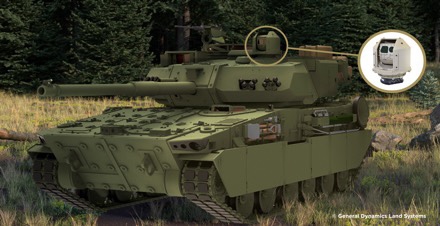
Bedford, NH, December 28, 2022.
The U.S. Army selected General Dynamics Land Systems’ (GDLS) all-new Mobile Protected Firepower (MPF) vehicle with Safran Optics 1’s PASEO Commander’s Independent Tactical Viewer (CITV) long-range panoramic targeting sight. The Low Rate Initial Production (LRIP) award, valued at $1.14 billion, will provide the U.S. Army with 96 vehicles over the next four years. The award also includes test support, logistics support and systems technical support.
“We are proud to have partnered with GDLS to offer our best-in-class PASEO CITV sight for the groundbreaking MPF, all for the ultimate benefit of those who will serve on the vehicle,” said Joseph Bogosian, President & CEO at Optics 1.
The PASEO is one of the most innovative surveillance and targeting sights for infantry vehicles and battlefield tanks. It provides an above-armor integrated sight enhancing situational awareness to the Commander and crewmembers.
MPF is a lightweight, direct-fire combat vehicle that is highly lethal and survivable to dominate ground threats on the multi-domain battlefield. The MPF vehicle employs a four-person crew and features an enhanced thermal viewer (PASEO CITV), a large-caliber cannon, a lightweight hull and turret, and a modern diesel engine, transmission and suspension system. This new tank will be the first newly designed vehicle for the Army in over 40 years.
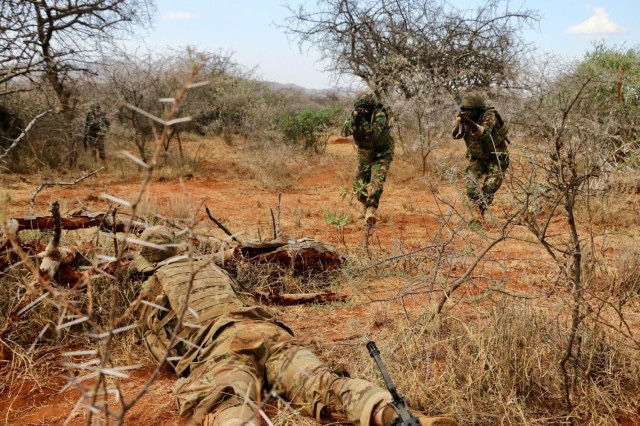
NAIROBI, Kenya — U.S. and Kenya military planners gathered in Nairobi, Kenya, Dec. 5-9, to finalize plans for U.S. Africa Command’s largest East Africa military training exercise.
Justified Accord 23, or JA 23, scheduled from Feb. 13-24, is led by U.S. Army Southern European Task Force, Africa. This multinational exercise brings together more than 20 countries from three continents to increase partner readiness for peacekeeping missions, crisis response, and humanitarian assistance.
JA 23 will feature the following events: An African Union academics course, a multinational field training exercise, a live-fire exercise, humanitarian assistance and disaster relief projects, as well as training on defensive cyber capabilities.
This is the first-year cyber elements will be included in the exercise.
“Cyberspace is an increasingly important aspect of our daily lives and it effects both our civilian and military operations,” said U.S. Army Lt. Col. Kendra Tippett, chief of plans and exercises (G6), SETAF-AF.
“It is critical we understand the threats in cyberspace and effectively defend against them,” she added.
Tippett explained how this year’s exercise will provide U.S. joint forces the opportunity to work with African partners in the cyber domain. Specifically, multinational forces including Kenya and Uganda will focus on key cyber aspects such as incident identification, threat intelligence, artifact collection, containment and eradication.
Kenya will host activities primarily in Nairobi and Isiolo, while Uganda, Rwanda and Djibouti will provide venues for additional exercise events.
“Working together in cyberspace with our African partners and sharing our best practices will ultimately enhance our ability to defend against malign actors who seek to degrade critical infrastructure and impede military and civilian operations,” Tippett said.
SETAF-AF, based in Vicenza, Italy, is U.S. Africa Command’s lead agent for planning the Justified Accord exercise series conducted annually in East Africa. SETAF-AF is responsible for coordinating all U.S. Army activities in Africa in support of U.S. Africa Command and U.S. Army Europe and Africa. Activities include military readiness exercises across the continent, hundreds of security force assistance engagements, crisis response and enduring posture support. These engagements strengthen partner networks in Africa, build partner capacity against regional and global security threats, and provide strategic access for U.S. forces in contingency operations.
For the latest photos, videos and articles from past and present iterations of the exercise, visit www.dvidshub.net/feature/JustifiedAccord.
By CPT Joe Legros
The Brazilian Air Force (FAB) held a ceremony on 19 December at the Anápolis Air Base (BAAN) marking the beginning of operational activities of the Gripen E fighters (referred to as Gripen F-39 in Brazil) by the First Air Defense Group (1st GDA).
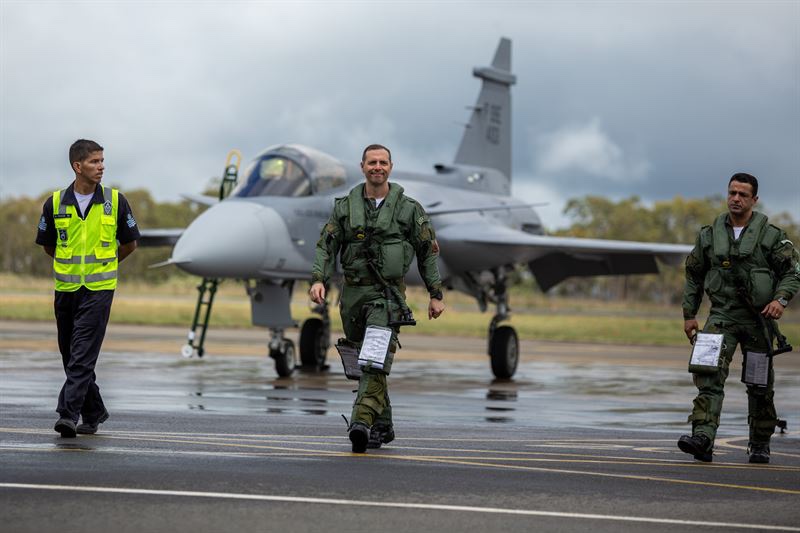
This important customer milestone follows the flight test phase in Brazil that started in September 2020 with the arrival of the test aircraft in the country, and which were conducted at the Gripen Flight Test Center (GFTC) located at the Embraer plant in Gavião Peixoto.
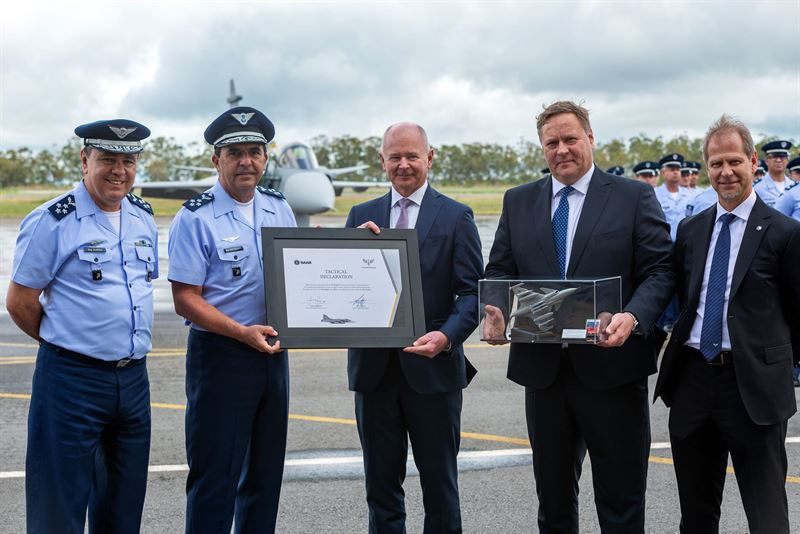
“The start of operational activities with Gripen E by the Brazilian Air Force (FAB) is an extremely important day. It marks the beginning of a new operational era for FAB but also is the result of years of hard work done in partnership with the Air Force and with our Brazilian industry partners: Embraer, AEL Sistemas, Akaer, Atech, and our own subsidiaries in Brazil,” said Saab’s President and CEO Micael Johansson.
At the event two Gripen fighters made a presentation flight led by FAB pilots Lieutenant Colonel Gustavo Pascotto, Commander of the 1st GDA, and Lieutenant Colonel Ramon Lincoln Santos Fórneas. The Brazilian pilots carried out their training with Gripen E in Sweden. They also practiced for today’s flight on the mission trainers, which are installed at the Anápolis Air Base.
In November, Saab achieved the certification necessary for the military use of Gripen E, which attests that the aircraft has met certain airworthiness and flight safety requirements which was an important step prior to operational activities with the FAB. This was granted by both the Swedish and Brazilian military authorities, represented by the Swedish Military Aviation Safety Inspectorate (FLYGI) and the Industrial Fostering and Coordination Institute (IFI) in Brazil. The joint certification reflects the synergy obtained through the technical cooperation between the two authorities in each country.
“Brazil now has one of the most advanced fighters in the world. This is currently the most extensive ongoing technology transfer programme in Brazil and it is definitely the largest one ever done by any Swedish company, bringing to the Brazilian defence industry the knowledge to develop, produce, test and maintain an advanced supersonic fighter. We are very proud to be a strategic partner to Brazil,” concluded Johansson.
Ever run across a credit card reader that seemed kind of sketch, like at an ATM or gas pump? The Hunter Cat Magnetic Stripe Reader allows you to test the reader to determine how many strip heads are contained within the reader.
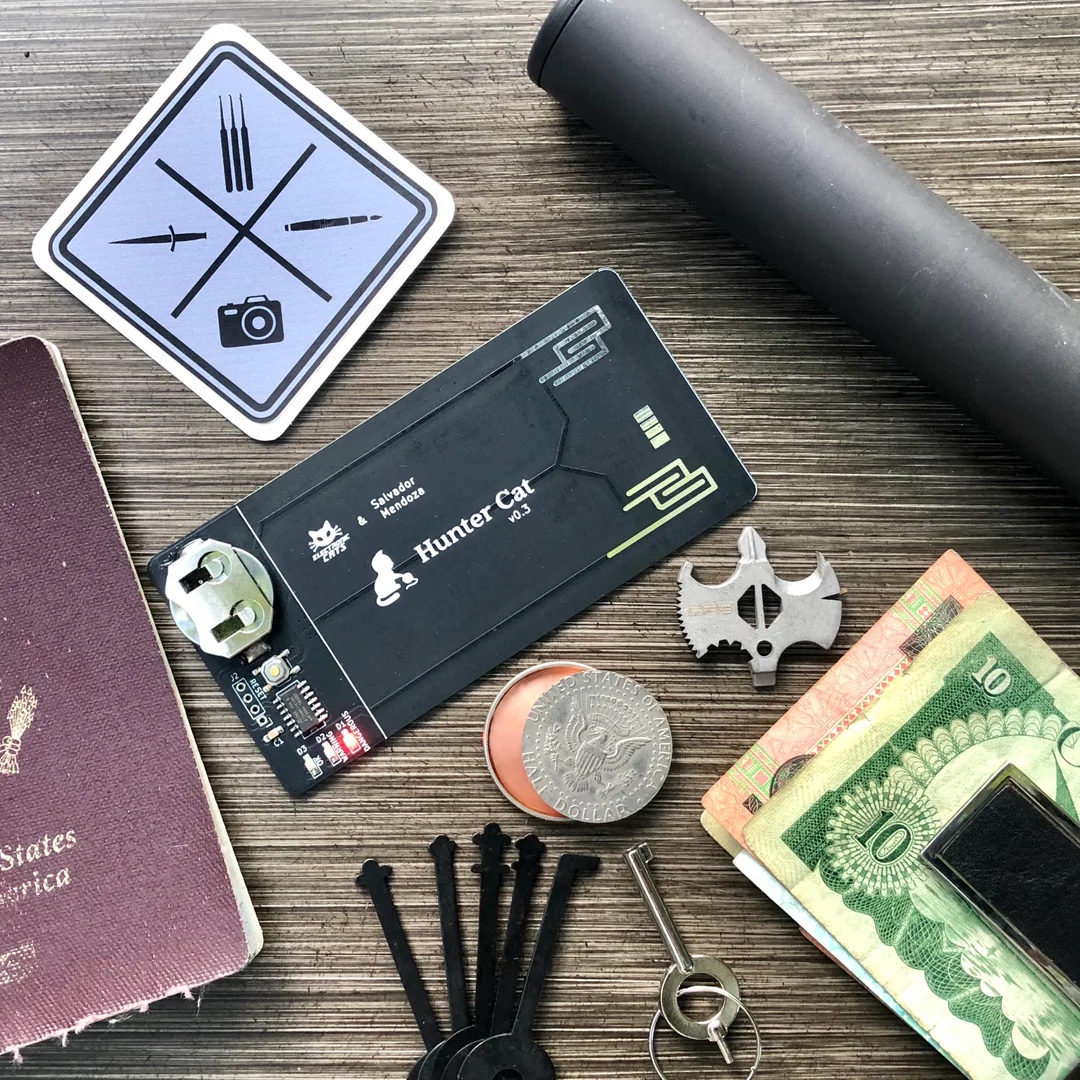
Once you’ve run it through the reader, it offers a visual readout via one of three different LED lights – Green (OK), Yellow (Warning), or Red (Dangerous).
shop.spycraft101.com/products/hunter-cat-magnetic-stripe-reader